The quirky, unique and beautiful baseball fields the game calls home
The playing surfaces of most sports can be pretty bland. The dimensions of the field, rink or court are codified in the rules. Every football field (American football at least) is the same size. It’s the same with basketball courts or soccer fields assuming they are regulation size. But, that is one place that baseball stands apart. While baseball fields have rules they must adhere to, much of the field that the game is played on is open to the whims of its creator.
shared dimensions
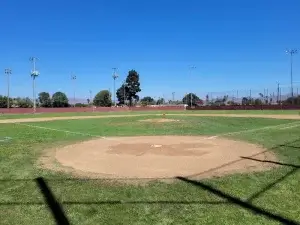 All baseball fields share some similarities. After about the age of 14, some dimensions are codified. The bases are 90 feet apart and form a square. The pitching rubber is 60′ 6″ away from home plate and elevated 10″.
All baseball fields share some similarities. After about the age of 14, some dimensions are codified. The bases are 90 feet apart and form a square. The pitching rubber is 60′ 6″ away from home plate and elevated 10″.
Other characteristics are in the field rules, too. Though, for many of us who play, it’s clear that many groundskeepers don’t always stick to those rules. The mound is meant to be 18 feet in diameter. There should be an area 5 feet long and 34″ wide surrounding the pitcher’s plate. And the rubber is supposed to be 18″ behind the center of the mound. We all play on fields from time to time where these measurements have been “ballparked” at best and ignored at worst.
Different levels of play may have other guidelines to follow, though. Factors such as the distance the dugout is from fair territory have been attempted, but not always successful. At the MLB level, baseball fields constructed after 1958 are supposed to have minimum fence distances of 325′ at the corners and 400′ to dead center. While most major league parks built under this rule are within compliance, MLB tends to waive the rule if new fence distances meet the spirit of the rule if not the letter of the rule. You can see the MLB field rules here.
At the college, high school and community level, you may not find rules at all to regulate fence distances or uniformity. Thankfully, that has the benefit of giving us some unique and interesting baseball fields to play on.
ground rules
You might often hear the term ground rule double, when a ball hits in fair territory and then bounces out of play. Technically, in most cases, this is a misnomer and is really just a two base award.
Ground rules are rules that are unique to a particular baseball field. Every field is different. And especially in foul territory, there may be obstacles or open areas that need to be defined before a game.
An example you might see in amateur games is where there is no fence defining the end of foul territory. When that’s the case, there will be a rule at that field defining where a ball would be considered “out of play”.
Another example might be on a field with a very shallow outfield fence. Often, a ball over that fence will be a double instead of a home run. This would be considered a ground rule,
You find out the ground rules at the home plate meeting before a game. Ground rules are another attribute that sets baseball fields apart from many sports.
Quirky Baseball Fields
The lack of rules in the outfield and fair territory dimensions has given communities, schools and ball clubs a lot of freedom to be creative. In some cases, it allows a ball field to be built in a tight or awkward space that couldn’t be used for other sports. That has made for some very interesting and fun baseball fields to play on.
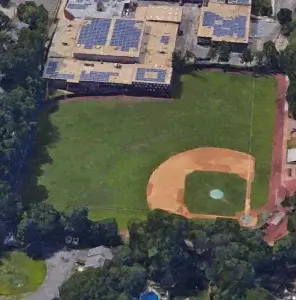
toms river south, New Jersey
One of the more well known quirky baseball fields is the one at Tom’s River South in New Jersey. The diamond and foul territory are pretty standard. Left field is normal. But the right side of centerfield and the whole of right center might give an outfielder pause while chasing down a deep fly ball.
A building struts its stuff right out into the outfield. The way the corner juts onto the field makes for the possibility of some lucky homeruns and interesting hops off the fence for the outfielders to chase down. Thankfully, no throwing lanes are blocked, but a ball going right for the corner of that wall will leave the outfielders guessing on which way it might rebound.
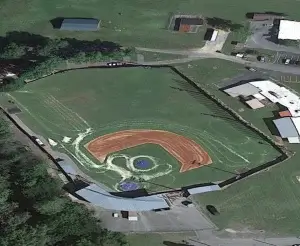
“the hook”, Fulton, Kentucky
If you are a lefty, you’d love to hit on this field. It has got to give pitchers nightmares.
Leftfield and left center are spacious with a lot of acreage for baseballs to find the grass. Rightfield, though, is just 225′ down the foul line. Sometimes places will implement a “ground rule” when a fence is this short, allowing that a ball hit over a certain section only counts for a double.
I’m not sure if that’s the case for this baseball field, but either way, a lefty pulling a line drive or a righty hitting an opposite field fly can’t be fun for the defense here.
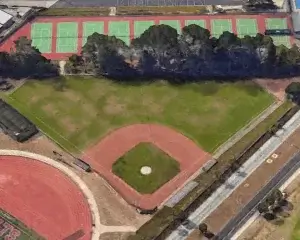
el Camino High school, San Francisco, ca
This field in the bay area features an “inverted” outfield. With most baseball fields, centerfield is the deepest part of the park. Then it will typically taper down to shorter distances in the corners.
That’s not the case on this field, though. Here, while the distances to the foul poles are fairly standard, the trip to center field is a paltry 220′ from home. In this case, there is a ground rule that a ball hit over a secondary barrier, above the fence in center, is only a double.
You could hit a bomb out past the tennis courts beyond the trees and it is still only a two bagger.
It would be interesting to be the center fielder on this field. Do you play at the fence? Do you play near the infield fringe? Possibly, you act as a rover, moving around depending on the situation.
I’m not sure if sanctioned games are played on this field, but if they are, I wonder how many “ground rule” doubles clear the fence in a typical game.
I think it would be fun to coach on this field. The strategy of how to use your outfielders would give you something to think about.
There are many weird baseball fields out there to play on.
my favorite ball fields of the MSBL and NABA World Series
If you play adult baseball as I do, you might look forward to playing in tournaments. I go to a few every year. They are a fun experience. It’s always a blast to play on different baseball fields. I love facing different competition than I see when playing in my baseball league.
But every year I, along with hundreds of other players, look forward to going to Arizona in October. The NABA World Series and the MSBL World Series are both hosted in the greater Phoenix area. One of the biggest treats of these tourneys is being able to play on the major league caliber Spring Training fields that are scattered around the area.
In the spring, these fields serve the Major League Baseball teams that call them their offseason home. In late spring, summer and fall they are used by local baseball leagues. But in the middle of fall, teams and players from around the world make the trek to the area to play at these locations.
While the fields may not be at their absolute best after hosting so much baseball during the year, they are still in great playing shape. The groundskeepers take pride in keeping them top notch. Here are some of my favorites to play at.
Tempe Diablo Stadium
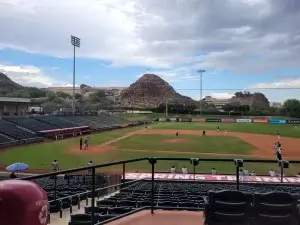
The Arizona home base for both organizations in October is Tempe Diablo Stadium.
This ballpark is the oldest Spring Training field in the Cactus league. Though it has been around for decades, it’s still a great facility for playing baseball. The playing field is huge, with a left field line of 345′, a right field distance of 365′ and the centerfield wall touching down at 440′ from home plate.
The deep fences and “traditional” shaped outfield walls are typical of the Spring Training fields here. In most cases, they are deeper than their regular season counterparts.
When you are lucky enough to get a stadium game here, you’ll have an in game announcer, the scoreboard lit up and use the large dugouts. The field plays nice. It is cut low and balls roll forever on it. While you may get a bad hop on a grounder every so often, most of the time the field plays seamlessly.
Even if you don’t get to play in the stadium, the facility has six full size backfields that are well maintained and fun to play on. If you get a game on one of the four furthest fields from the stadium, you’ll have a long walk. But it’s a nice one, as you get a chance to see the grounds that the Angels train on.
Goodyear ballpark
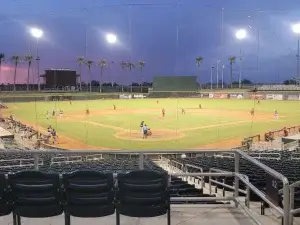
One of the newer stadiums in the metro area is Goodyear Ballpark. It plays duel Spring Training host to the Reds and the Guardians ball clubs.
When you walk through the front entrance, you’ll probably be in awe of how beautiful the grounds and architecture are. It gets even better once you walk through the concourse to reveal the field. Pristine and beautiful. Like Tempe Diablo, the dimensions are large with a deep center field. The dugouts are enormous.
If you get the chance to play here under the lights, it’s a treat in itself. The stadium practically glows when those towers flare up.
The grass is fast and the infield dirt is smooth. You could easily miss the bullpen tucked in behind the leftfield fence.
Beware, if you get here when the sun is going down, there is a good chance you are going to get distracted.
The beauty of the stadium along with an Arizona sunset is the perfect combination of aesthetics for a baseball game.
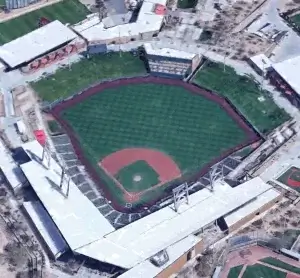
salt river fields at talking stick
It doesn’t happen often, but at Salt River, NL West rivals share the grounds and stadium.
The baseball campus at Talking Stick is huge. On one side of the stadium is the Rockies’ back fields and on the other is the Diamondbacks’.
The stadium is great though. Closed off from the outside world when you are inside of it.
Salt River is one of the nicest stadiums in the AZ circuit. It has the feel of a regular major league stadium. It has the uniform outfield fence that’s common on these fields.
The backfields are a bit of a walk but it’s worth it to play on the spacious fields.
honorable mention: American family of fields
Tucked in over in Maryvale, American Family of Fields is mentioned here not because of its stadium. But of all the facilities I’ve played at, this complex has some of the best backfields to play on. The grass is beautiful and the dirt plays true. But what I love about American Family of Fields are their mounds. They are tight, smooth and don’t dent easily. The clay almost has a rubber feel. In the 9th inning, there’s no hole dug in front of the pitcher’s plate or where you’re foot plants.
Thumbs up to their groundskeepers!
My “Home” Baseball fields
Playing baseball in SLO County can be a bit rough. There aren’t a lot of public fields open for use to adult baseball leagues. So when our regular field isn’t available, we have to travel or get creative in where we play.
This does often make for some fun games, though, as a couple of our secondary fields are on the short side.
sinsheimer stadium
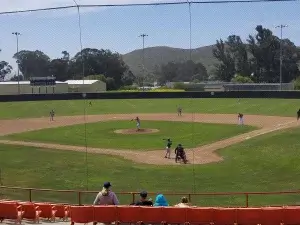
This baseball field plays home to the SLO MSBL through most of the season. But it is also the home of the SLO Blues, a summer collegiate team in the CCL.
Sinsheimer has its good and bad. The field has some pretty standard dimensions. The weather is beautiful here almost year round. The wind usually comes in from right to left field and as the day goes on, it gets more severe.
The grass gets some TLC over the winter each year, but due to California summers and a years long drought, it gets pretty beat up by the end of the season. The infield dirt is okay, but as the day goes on it gets dusty. By the third game of the day, there are usually some very interesting hops on the infield and the pitcher’s mound looks like a minefield.
This is a stadium getting on in years, but it does have some charm. The seating isn’t too bad and there’s a good size grassy knoll above the seats for spectators to relax.
The best part about Sinsheimer is that it’s home. If I’m pulling up to the parking lot there, it means only one thing. I’m getting ready to play baseball.
porter Field
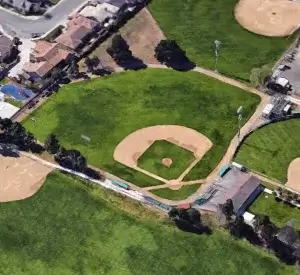
Because we share Sinsheimer with the SLO Blues, there are times when we have to use other fields in the area. The primary alternative is Porter Field in Arroyo Grande.
This field is part of the larger Soto Sports Complex which also has softball, little league and soccer fields.
Porter field is a bit shorter than Sinsheimer but is still adequate for adult baseball. This field plays very slowly as the grass is typically cut high. There are a lot of infield hits here and the ball will often die in the outfield turf, making it harder to read a bounce.
The infield features the “launching ramps” as many players have dubbed them. On either side of second base, where the dirt meets grass, there is a berm that has built up over the years. When a hard grounder hits these hills, you better be ready for a monster hop.
Even with these flaws in the playing surface, Porter is a nice getaway in the summer. It sits about a mile from the ocean and provides a nice cooldown.
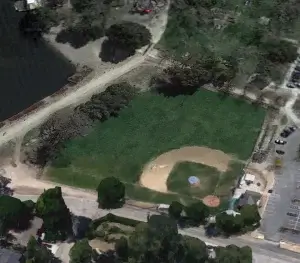
alvord field
The baseball field at the Atascadero Lake Park is special to me. Alvord Field is the place where I played baseball as a teen. A couple of times a year, our league will play here. And it is definitely a treat, especially for hitters with warning track power.
The distance down the left field line is 310′. The right field line is 285′. Center field is only 325′.
As Alvord is tucked in between Atascadero Lake, the park and the street, a lot of baseballs end up going missing when we play here. There is a house across the street from third base that probably has hundreds of foul balls in it from games played over the years.
Parking near the field is a risk. The parking lot is only 30′ from the field and many unwitting drivers have come back from the park with a windshield to replace.
The first time I played here as an adult brought back a lot of great memories from years ago. I guess that is another wonderful thing about baseball fields. They often hold nostalgia for those that battled out games on them in the past. It’s not the best baseball field around, but it is one that means a lot to me.
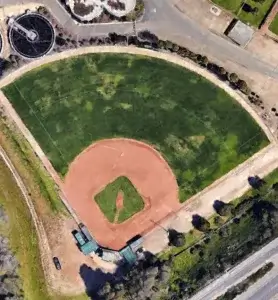
Blair Field
We don’t often play at this field in Pismo Beach. Only a couple of times over the years has it been necessary to hold games here. I’m including it here because it has some interesting quirks.
One thing that stands out is this field is made for play at multiple age levels. Because of this, the infield grass is cut to a Little league size. When adult games are played on this field, there is 30′ of infield dirt between the grass and baseline. As an infielder, this is great since the ball rolls faster and there aren’t too many bad hops.
As a pitcher, it can be daunting. Since Blair field is made for different ages, it doesn’t have a permanent mound. Instead, a mobile mound is used. The one here is very springy. You either love it or hate it.
The outfield fence is short. It’s only 295′. All the way around. It is a rarity for a baseball field to have a fence that is equidistant from the plate at every point.
Because it is such a short field, there is a 30′ high fence going from centerfield to the left field foul pole.
In past years, the league would sometimes hold a homerun derby here over the 4th of July holiday. Overall, it’s an interesting field to play on.
honorable mention: Morro bay high school
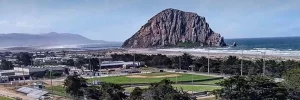
Sometimes it’s not the field itself that is so memorable, but the backdrop under which you get to play the game. This field in Morro Bay doesn’t host adult baseball anymore, with the exception of occasional practices.
But there’s no denying the beauty of its surroundings.
The baseball field is about 50 yards from the waves and a row of eucalyptus trees is the only thing standing between the left field line and the beach.
Nestled straight behind home plate only a quarter mile away is iconic Morro Rock.
This beach town on the central coast of California is a hidden gem.
While there are many amazing locations for baseball fields, the field at MBHS sits near the top of my list.
What are your favorite Places to play?
Across the US, and the world, there are countless baseball fields that players call home. Because of the freedom of dimensions, every field has its own character and personality. This is one of the things that sets baseball apart from most other sports. While the game is the same where ever you play, the nuances of how its played change from place to place.
It gives new meaning to the term “home field advantage”.
Leave a comment about the field you play on, what your favorite field is or any interesting baseball fields you think I should check out. I’d love to hear about some interesting ground rules, too.
Any day on the ball field is a good day.
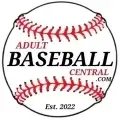
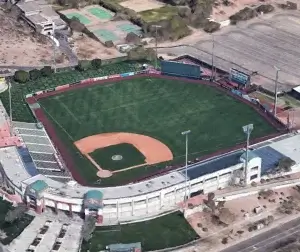
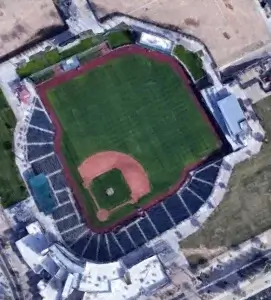
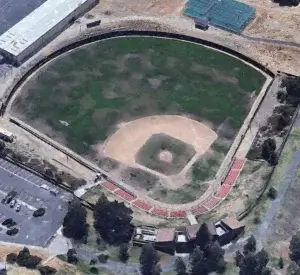
The iconic diamond shape at the heart of the baseball field holds unrivaled significance, governing all players’ actions and determining their scoring success like no other sports field. Its unique design shapes the very essence of the game, setting baseball apart with its strategic brilliance and the thrill of every play.
My friends and I are big fans of baseball, so we wanted to watch a live game this summer for the first time. It was a useful piece of information when you told us that there are ground rules like a ball over the fence is counted as a double instead of a home run if the game is held on a field with a very shallow outfield fence. I’ll keep this in mind while I look for where I can buy tickets to a game this summer.